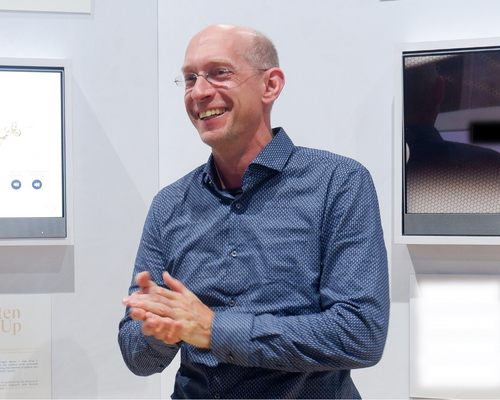 Dear Friends, Collaborators and Partners, Students, Staff and Faculty,
Dear Friends, Collaborators and Partners, Students, Staff and Faculty,
2022 was an exciting year on so many levels! Despite still recovering from the challenges associated with the COVID-19 pandemic, our students, staff and faculty have accomplished so much. We have seen growth in research output and funding, in diversity and in visibility of our programs. We have seen societal and commercialization impact, growing student enrollment in our programs so that we can better meet the demands of the massively growing high-tech industry in our state.
We cannot produce graduating students fast enough for the growth in the local industry! What a wonderful problem to have, one that we intend to meet with further investments into infrastructure and faculty.
We have welcomed one new tenure-track faculty member (Dr. Kai Fu), one research faculty (Dr. Moses Noh) and two new teaching faculty (Dr. Habtamu Aycheh and Dr. Raheel Bhutta) this year. We have seen our University of Utah Asia Campus (Songdo/Incheon, South Korea) enrollment grow within its first year of existence to over 90 students, and it appears to be on track to create a program that could easily reach and exceed 150 to 200 students across the 4 years of their undergraduate degree. These students have the unique opportunity to transition to the Salt Lake City Campus after their initial 2 years in South Korea.
We would like to acknowledge that the success of the University of Utah Asia Campus program is thanks to the efforts of Dr. Fatemeh Mahalian, who has done an outstanding job as local ambassador and Associate Director of the ECE UAC program, as well as Dr. Hanseup Kim who developed the program and worked with the South Korean government to allow ECE to offer our program in South Korea. Many efforts have also been made by staff and faculty to host an annual summer program here in Salt Lake City in which undergraduate students from the Utah Asia Campus travel to our local campus to meet faculty and explore the campus they will soon call home.
Our productivity has grown in all areas; students trained across all degree levels, research and engineering output in creation of new knowledge and intellectual property has increased, and publications, patents and translated products, and our research volume has grown by almost 14% since the last year. Our students and faculty are increasingly recognized for their achievements, with a growing number of high-level awards and advancements.
We have started implementing the most significant changes ever in our undergraduate curriculum: we replaced our extremely rigid program that prevented students from pursuing sufficient courses in new and hot topic areas of their interest with a new approach that allows students to choose freely from categories of classes coupled with “tracks” in areas ranging from robotics, AI/Machine Learning, Power Systems, and many more that help guide the students in their selections.
We were able to make significant investments into outreach and recruitment as well as marketing and communications, with two new full-time positions being created with support from the College of Engineering. This will allow us to help take better control and ownership of the many hot and interesting growth areas again in the public discourse that, in public perception, had started to become more associated with Mechanical Engineering, Computer Science, Biomedical Engineering and others.
We have been able to complete the first phase of our undergraduate teaching laboratory renovation thanks to the extremely generous donations led by Annette and David Jorgensen and L3Harris together with support from the College of Engineering and many other wonderful donors.
We are very grateful to all our private and industrial donors, a state that has been exceptionally supportive of engineering, and a College that has been very supportive to our department! In fact, we have grown so much that we have run out of space; many of our faculty and students have to share their spaces akin to working in submarine conditions, with the average lab area around 400 square feet per faculty and, at times, over 20 students crammed into 700 square feet of space that has to serve as both a lab and office area. It was encouraging to learn that the College of Engineering has received support to begin the planning of a new building for computing-related efforts that our computer engineering-related faculty will be able to benefit from. It is already clear that we will be needing at least one additional building to accommodate for the anticipated and already accumulated growth, so we sincerely hope that your support will continue so that we can continue to build the basis for future generations of engineers and leaders that will support our state.
Our newsletter highlights a selection of topics and accomplishments that you may be interested in and allows you to participate a little in what we are doing.
I would like to thank all the students, faculty and staff for their countless daily contributions and for making this place what it is! I am proud of how our department has developed and am grateful for all the support.
I wish all of you and your families a wonderful Christmas or Holiday Break and a great start into the New Year 2023.
Thank you very much.
-ECE Chair and Professor, Dr. Florian Solzbacher